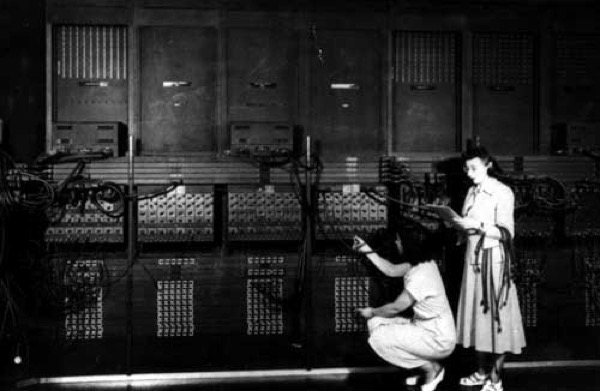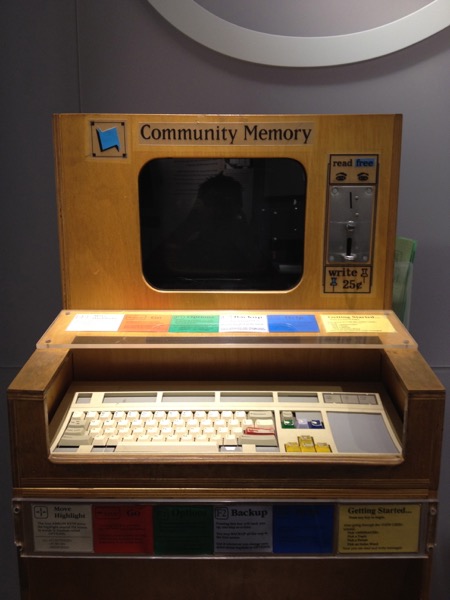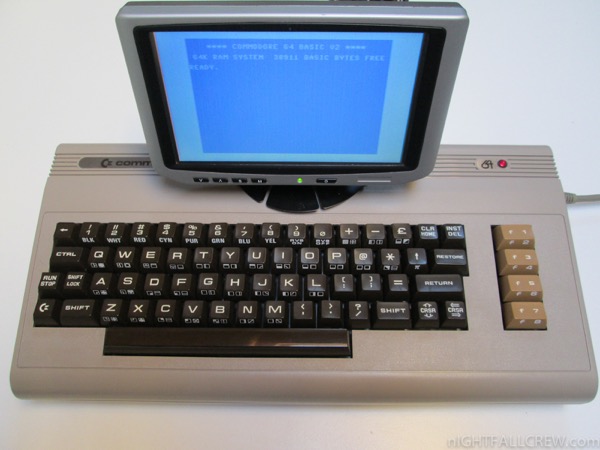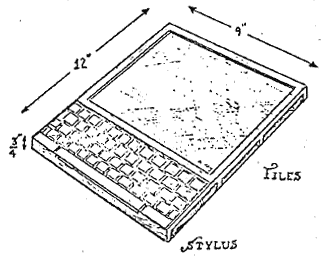This semester I’m teaching a class called Special Projects in Tiny Computing. It’s an ideal space for us to explore the history of computing and to discuss our role in shaping and critiquing technology in culture from its ancient past to the present of ubiquitous computing and the ‘internet of things’. It’s also an opportunity for us to engage in speculative design and to actually build and experiment with hardware and software.
From a teaching and learning perspective, I’m using this class as an opportunity for us to talk about the rise of computing and its history from original mainframes and programming languages. We looked at these early machines like University of Pennslyvania’s ENIAC machine whose earliest programmers were a group of over 200 women, the original computers, many of whom receieved no credit for their work during their lifetimes.

The history of computers is inextricably tied to a history of defense and the military, who have often funded projects in university computer science departments. Growing out of the 1960s/70s counter-culture community in the bay area was the rise of a new homebuilt computer culture, driven by a very different mission. Some of this story, particularly the rise of Jobs/Wozniak and Apple has been told in popular culture. Left out or minimized in this telling was the pre-history of the consumer silicon valley culture, when places like Stanford Research Center’s Douglas Englebart were experimenting with new interfaces, hardware and software. We can trace so much of modern computing to his Augmentation Research Center innovations: the mouse as interface for interaction; the file system as a way to organize and store information; the ability to have simultaneous editing of shared screens / files (which took dozens of years to replicate); the ability to connect to projectors and remote systems; hypertext systems; and much more, demonstrated at the infamous Mother of All Demos in 1968.
In the early 1970s outside the entrance to Leopold’s Records in Berkeley, California stood a new experiment: Community Memory. A terminal connected via a modem running over a phone line connected to the Resource One computer center in San Francisco. Created by a team of friends, who split up the creation of the hardware, software and interface, this was an experiment in designing a system for people to exchange information in a digital bullet board. But the name Community Memory implies something deeper than just a predecessor to Craigslist. These early forums were places that people started to self-organize, seek friends and activity partners, or place new digital artforms. New language, customs and culture slowly came into being with use over time. Although birthed by a group of creators, Community Memory took on a life of its own, expanding and growing into a stringy network of nodes of people.
strong, free, non-hierarchical channels of communication–whether by computer and modem, pen and ink, telephone, or face-to-face–are the front line of reclaiming and revitalizing our communities –Doug Schuler, Community networks: building a new participatory medium, 1995

In the late 70s and into the 80s were the new home computers like Commodore 64, which booted into a BASIC editor. In this era a new generation of home-based experimenters were born. These computers didn’t come with that much software installed but a number of books and magazines featured Type-In programs. A beloved early version was Basic Computer Games, edited by Dave Ahl. By following the directions and typing them into your home computer, you’d have small games and new software to play with and of course learn from. In this era, computers were seen less as a means of cultural consumption and more of a set of custom tools for augmenting the mind.

Many folks cite a connection between this era of the home Commodore 64 computers with this new age of tiny single board computers like the Pi. Like the Commodore, the Pi features a minimum of basic software, with a scaffolded experience to make it easier to work with the Terminal for lower level manipulation.
In my classroom we imagine an alternative speculative history. Inspired by visions like Alan Kay’s Dynabook and projects like Community Memory, students design and build their own technology as a tool of learning, as a mode to critique and interrogate the technology we’ve inherited and live with, and as a form of empowerment.
The small Raspberry Pi single board computers have at this point been out for 7 years, and over that time there have been dozens of updates and other companies building similar devices with various options. On the cheap end are the Raspberry Pi Zero computers, which for less than $10 gives you a minimal USB-stick size computer with small but definitely useable compute power. On the upper end are the newer boards with GPUs like the Nvidia Jetson Nano, which includes a GPU, enabling complex fast multimedia videos, interactive installations, potentially even significant computer power for machine learning.

In the weeks ahead students will be building their own digital community archives for sharing recipes and food sources in food deserts, create wearable computers with the goal of reducing stress, and create playful new forms of collaborative writing. And these are just some of the proposals in class. No doubt some of these projects will fail or shift significantly. But that’s an important learning moment as well.
At the conclusion of the class I hope to be able to present some of these speculative works publicly. I can’t imagine better creators and interrogators of technology than students. Stay tuned.